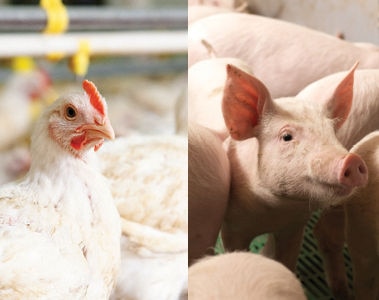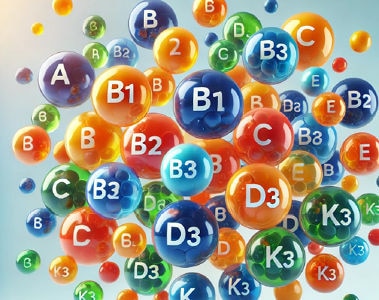Remember how vitamins were discovered in the first place? Night blindness (vitamin A), rickets (vitamin D), pellagra (niacin), scurvy (vitamin C), and pernicious anemia (vitamin B12) were all found to be specific diseases caused by nutritional deficiencies or imbalances—NOT caused by infectious agents or other disease vectors.
In the US, the Federal Food, Drug and Cosmetic Act (FD&C Act) defines a nutritional deficiency as a “well documented condition directly resulting from deficiency of a single essential nutrient.” In the eyes of the Food and Drug Administration (FDA), feed ingredients for livestock are defined either as a food or as a drug (“a product used to diagnose, cure, mitigate, treat or prevent disease”). In the U.S. animal feed industry, there is no dietary supplement category, which exists in the human arena as a middle ground of “not designed to prevent or treat disease.” The good news for clinicians and livestock nutritionists is that most vitamin supplementation guidelines have been adapted under practical conditions which include normal disease or immunity challenges.
What’s changing is our understanding of how vitamins perform their metabolic functions (the chemical processes that occur within a living organism in order to maintain life) and how interrelated certain processes, including immunity, can be, even while narrowly defining vitamins as preventive for specific nutritional deficiency diseases. Using Merriam-Webster’s (2023) definition of immunity as “being able to resist a particular disease, especially through preventing development of a pathogenic microorganism,” immunity becomes a complicated balance between protective barrier functions, pathogen neutralization (immunostimulatory), and host protection (anti-inflammatory). A short list of known vitamin-supported functions involved in immunity include:
- Energy and protein metabolism (examples: B1, B2, B6, niacin, pantothenic acid, biotin). These provide structure and fuel for animals to maintain production and resist disease, as do all nutrients.
- Growth, cell maintenance (examples: folic acid, B12). Certain vitamins have specific functions in supporting cell growth, structural integrity, and red blood cell production.
- Barrier functions. A good example is vitamin A, which supports epithelial integrity, gut enterocytes, and maintenance of goblet cells which produce mucin, a microbial barrier in the gut. Vitamin B6 is also involved in mucin synthesis.
- Antioxidants (vitamin E, C). Because many of the immune reactions generate damaging metabolites such as superoxide or nitric oxide which are necessary for the neutralization of pathogens, the role of antioxidants in quenching these reactions and protecting host tissue has been widely studied in every specie.
- Anti-inflammation. An example is a recent broiler study (Morris et al, 2014) whereby supplemental HyD® 25-OH-D3 improved immune response by both reducing pro-inflammatory cytokines while also stimulating nitric oxide production (oxidative burst) by neutrophils.
- Gene expression. 1, 25- OH-D3 binds to vitamin D receptors in immune cells which upregulates production of several antimicrobial molecules (Liu et al, 2006).
- Gut microbiome interactions. The gastrointestinal tract and its contents represent 70% of an animal’s immune system. Several vitamins, including vitamin D, directly influence composition and diversity of the microbiome.
Vitamins have diverse roles in supporting growth, production, and homeostatic functions including immunity. Our increased understanding of these roles is reflected in dsm-firmenich OVN Optimum Vitamin Nutrition® supplementation guidelines for animal feed. The relative importance of vitamin supplementation increases during special production challenges, such as non-antibiotic programs.
(References available on request).



